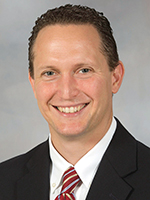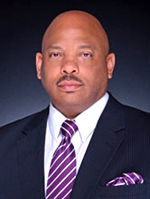SOPH academic life study, website fight faculty burnout

“Burning the candle at both ends” is not an appropriate metaphor for work-life balance as a faculty member. For one, two is simply not enough ends. With teaching duties, grant deadlines, committee service, research protocols or clinical rounds – or both – in addition to life off-campus, the candle needs to be shaped more like a star, with all points burning inward.
Burnout in physicians and nurses has been a topic of academic discussion for years, but now the University of Mississippi Medical Center is taking the lead in assessing burnout among university faculty in general.
The John D. Bower School of Population Health developed and distributed the Quality of Academic Life survey to assess the prevalence of burnout on eight Mississippi Institutions of Higher Learning campuses.

“Some of the challenges we are experiencing in health care are similar to those we see in higher education, and when you look at the issue of burnout, faculty face similar challenges to clinicians,” said Dr. Bettina Beech, dean of the school and leader of the study.
For example, both environments are shifting towards consumer-driven models of delivery. Student success, like learning and career placement are parallel to patient success, like improved health and reduced hospital readmissions.
In population health, the “Quadruple Aim” is a framework for transitioning a sole focus of health care at the individual level to optimizing health and health care for individuals and communities to provide better outcomes, improved patient experience and improved clinician experience with decreasing costs. In a recent publication, Beech applied this framework to address issues in higher education. One could describe higher education’s own quadruple aim as lower tuition and debt, improving student outcomes and graduation rates, student experience and faculty quality of life.
“Faculty burnout has been linked to poor student outcomes, early retirement, lower research productivity and diminished teaching quality,” said Beech. “Furthermore, these outcomes place additional financial stress on the education system.”
Funded through a grant from the Bower Foundation, in 2018 the Quality of Academic Life study sent a survey to all full-time faculty at the eight IHL campuses. The survey included questions about stress, personal motivations and meaning derived from their work.
“Our goal is to use data-driven solutions to address faculty burnout,” Beech said.
Of the nearly 900 IHL respondents, 40.6 percent showed signs of burnout. It’s a lower prevalence than physicians in general: Medscape’s 2018 Physician Lifestyle Report found that 42 percent of respondents reported burnout. But it’s higher than the general workforce, where a 2018 Gallup survey found that 23 percent of American felt burned out at work always or most days.
However, measuring burnout doesn’t mean much if there are not efforts to address it.

The Quality of Academic Life clearinghouse website is designed to aid people in coping with life- and work-related stressors. It includes resources sorted into five domains that affect quality of life:
- physical status and functional abilities;
- social interactions;
- religious and/or spiritual status;
- economic and/or vocational status;
- and psychological status and well-being.
You can read an academic paper on how to measure quality of life, view a TED talk on breaking bad habits, or take a quiz to measure your social capital.
Beech said the clearinghouse is one of the first resources of its kind geared towards academics. Because it’s a public website, anyone can find the resources and benefit from them, not just Mississippi IHL faculty.

Individual efforts to improve mental health, eat better and make time for important relationships can only go so far in preventing burnout, said Dr. Joshua Mann, professor and chair of preventive medicine and director of the UMMC Office of Well Being. “Previous studies in physicians suggest that the balance is about 20 percent individual efforts and 80 percent institutional factors in effectively fighting burnout.”
“We can view the workplace as a population,” said Mann, one of the study leaders. “Within our institution, we have more influence on creating an improvement in quality of life than we might have for the general population of a city, county or state because our employees spend 40 or more hours a week here.”
For instance, the Office of Wellbeing, which recently launched the Well Being Index survey and tools campus wide at UMMC, hosts a series of programs and events through Everyday Wellness that help address the same domains covered by the Quality of Academic Life Study.

One of those is the farmer’s market, which Dr. Stephen Stray thinks is a good way to encourage habits.
Stray, an associate professor of microbiology of immunology, said he sees signs of burnout in colleagues regularly.
“There’s a culture in research training and among faculty to stay up all night and compete to be the hardest working,” he said. “It’s hard to break that pattern, but at least we can do something to make sure the next generation of faculty and researchers do not fall into the same issues,” said Stray, who is not involved in the study.
In the third stage of the Quality of Academic Life Study, the SOPH plans to send a second survey to Mississippi faculty including assessing change in stress and burnout and knowledge and use of the clearinghouse to determine if it may be a helpful tool in fighting burnout. The SOPH will share data with the IHL and member institutions to help them develop strategies and better understand the particular dynamics of burnout on their campuses.



